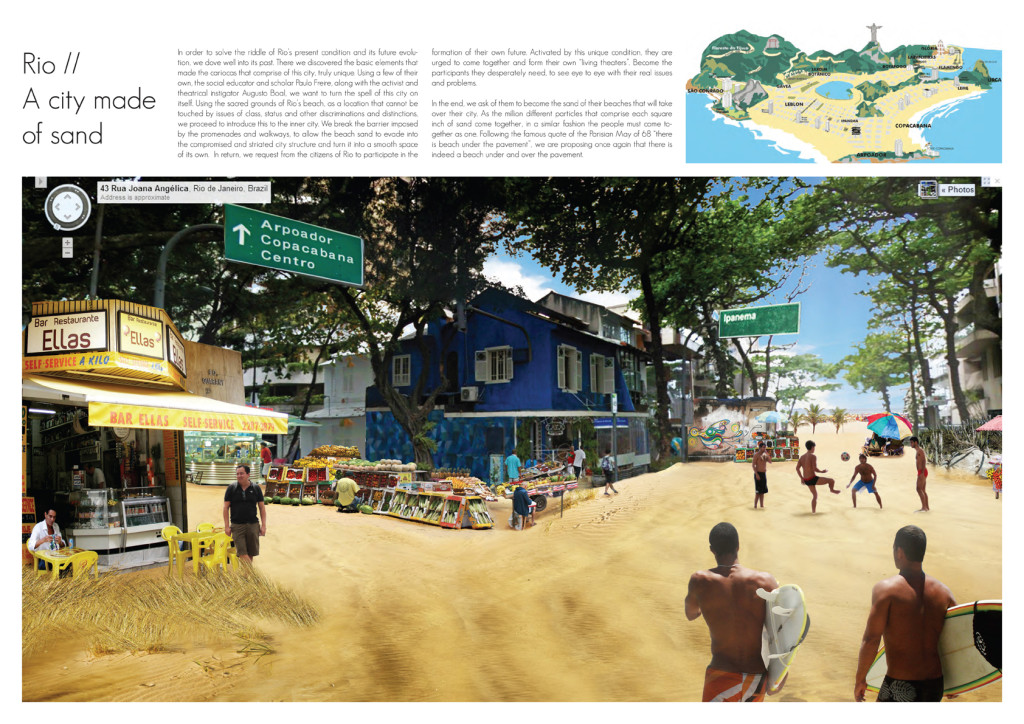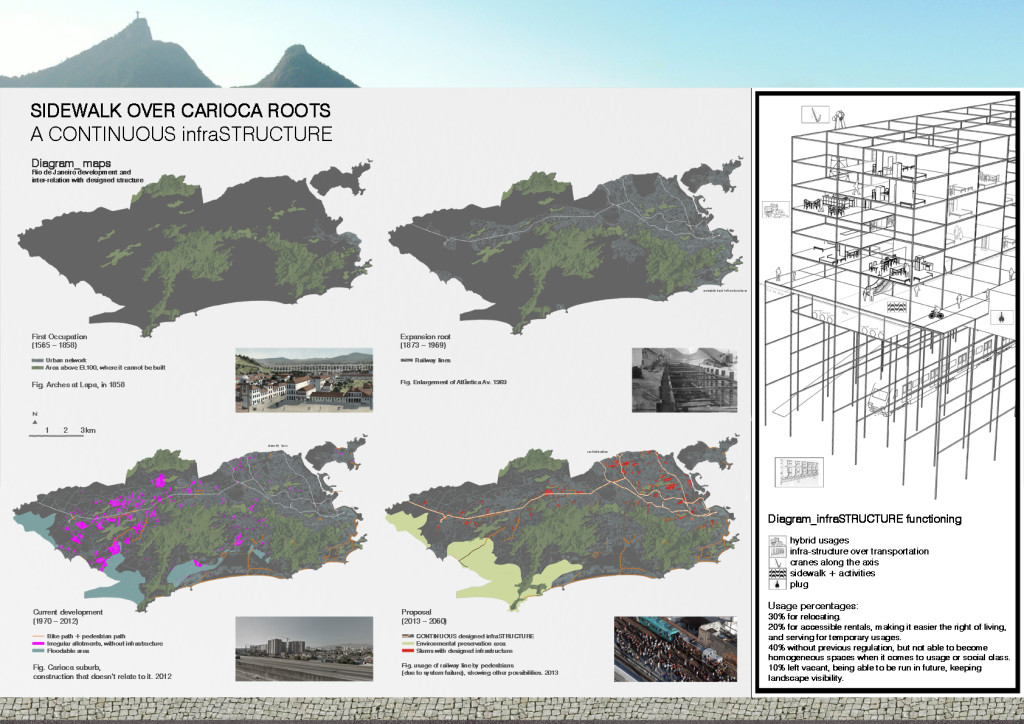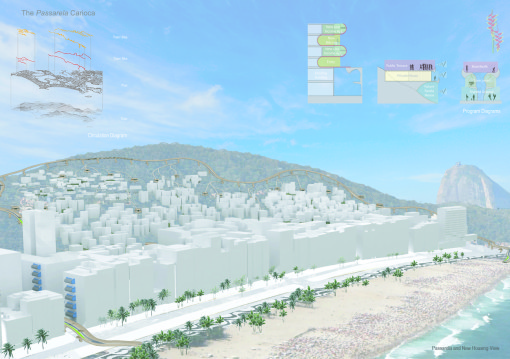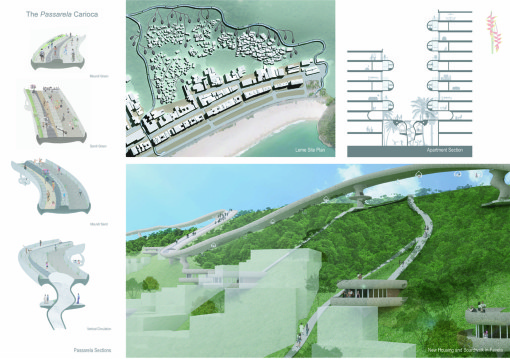Info:
Title: The Passarela Carioca - Code: 5b4d1Contest: Rio de Janeiro / 2013
By: Alice Cimring - Marcus Chaidez - Diana Viera - Gabriela Sanchez - Gregory Martinez - Veronica Pereda - Thais Mathias - Sophie Juneau
Views: 3838 Likes: 2
Votes:
Alejandro Zaera-Polo 8 Jeffrey Inaba 3 Jeroen Koolhaas 1 Hernan Diaz Alonso 1 Cristiano Toraldo di Francia 8 Pedro Rivera 54.3
The Passarela Carioca
Can one find more wonder in the so called Cidade maravilhosa (Wonderful City) that isn’t there already? Keeping in mind Rio’s existing social discrepancies, the starting point is to ask: when is the wonder of Rio de Janeiro at its best? Is it for New Year’s Eve when 2 million cariocas (inhabitants of Rio) and foreigners alike invade the beach of Copacabana wearing white clothing to represent peace and renewal? Or maybe it is for Carnaval (Carnival), when the Blocos (block parties) meander through the streets, bursting with energy from thousands of people chasing a band playing traditional samba music or when the Sambódromo (carnival parade ground) stages the Schools of Samba parade, one of the most glamorous and dazzling spectacles in the world. These events portray Rio at its best simply because they are celebrations that transcend social classes and age groups; they are gatherings where all classes of the population are brought together, sharing the same plane at the same time. This phenomenon also happens in a day to day setting on Rio’s beaches, the ultimate public space which has no borders, where the beachside Burle Marx boardwalk, warm sand and swelling ocean welcome everyone to delight themselves in the most democratic manner. Inspired by this spirit of social integration, the project blurs the hard edges that divide Rio’s hill top favelas from the formal city below by extending the beach side calçadões (boardwalks) into and through the favelas (shanty towns). The calçadão morphs into an elevated passarela (runway) that meanders through the hills, edging the favelas, bringing public infrastructure up to the informal city. The footbridge structure combines a hanging monorail system on its underside, inspired by the cable cart found in the Pão de Acucar (Sugar Loaf), basic infrastructure in the middle (water, sewage, electricity, etc) and a pedestrian and bicycle walk/leisure area on the top. As this infrastructural spine stitches the formal and informal cities, smaller vertical and horizontal arteries sprout from its structure creating low income housing in the wealthier areas and planting well-to-do homes in the favelas. Furthermore, smaller stems infiltrate deeper into the favelas taking infrastructure where needed. The infrastructural system created is reminiscent of the native pendant heliconia plant (bird-of-paradise) with its bulbs continually growing from its stems. In the project, the bulbs are analogous to the newly created houses, whose existence is dependent on the nurturing spine. Most importantly though, at a social level, the stem connects every carioca, programmatically combining all that is essential for their living and everything that is intrinsically important for them: infrastructure, public space, the giant passarella, and a three-dimensional calçadão, which becomes the daily stage for buoyant carnival inspired gatherings.
Info:
Title: The Passarela Carioca
Time: 4 agosto 2013
Category: Rio de Janeiro
Views: 3838 Likes: 2
Tags: -








